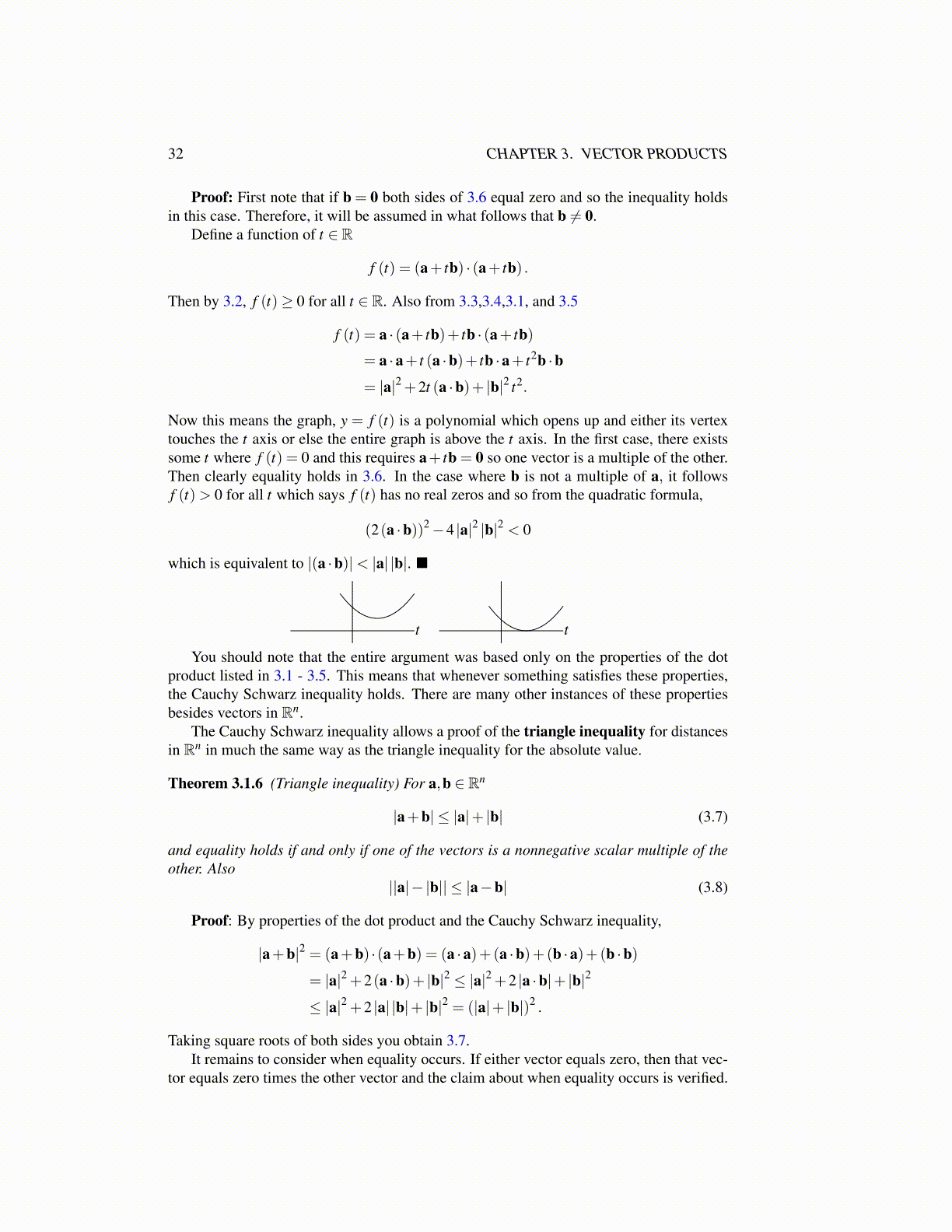
32 CHAPTER 3. VECTOR PRODUCTS
Proof: First note that if b = 0 both sides of 3.6 equal zero and so the inequality holdsin this case. Therefore, it will be assumed in what follows that b ̸= 0.
Define a function of t ∈ R
f (t) = (a+ tb) · (a+ tb) .
Then by 3.2, f (t)≥ 0 for all t ∈ R. Also from 3.3,3.4,3.1, and 3.5
f (t) = a · (a+ tb)+ tb · (a+ tb)
= a ·a+ t (a ·b)+ tb ·a+ t2b ·b
= |a|2 +2t (a ·b)+ |b|2 t2.
Now this means the graph, y = f (t) is a polynomial which opens up and either its vertextouches the t axis or else the entire graph is above the t axis. In the first case, there existssome t where f (t) = 0 and this requires a+ tb = 0 so one vector is a multiple of the other.Then clearly equality holds in 3.6. In the case where b is not a multiple of a, it followsf (t)> 0 for all t which says f (t) has no real zeros and so from the quadratic formula,
(2(a ·b))2−4 |a|2 |b|2 < 0
which is equivalent to |(a ·b)|< |a| |b|. ■
t t
You should note that the entire argument was based only on the properties of the dotproduct listed in 3.1 - 3.5. This means that whenever something satisfies these properties,the Cauchy Schwarz inequality holds. There are many other instances of these propertiesbesides vectors in Rn.
The Cauchy Schwarz inequality allows a proof of the triangle inequality for distancesin Rn in much the same way as the triangle inequality for the absolute value.
Theorem 3.1.6 (Triangle inequality) For a,b ∈ Rn
|a+b| ≤ |a|+ |b| (3.7)
and equality holds if and only if one of the vectors is a nonnegative scalar multiple of theother. Also
||a|− |b|| ≤ |a−b| (3.8)
Proof: By properties of the dot product and the Cauchy Schwarz inequality,
|a+b|2 = (a+b) ·(a+b) = (a ·a)+(a ·b)+(b ·a)+(b ·b)
= |a|2 +2(a ·b)+ |b|2 ≤ |a|2 +2 |a ·b|+ |b|2
≤ |a|2 +2 |a| |b|+ |b|2 = (|a|+ |b|)2 .
Taking square roots of both sides you obtain 3.7.It remains to consider when equality occurs. If either vector equals zero, then that vec-
tor equals zero times the other vector and the claim about when equality occurs is verified.